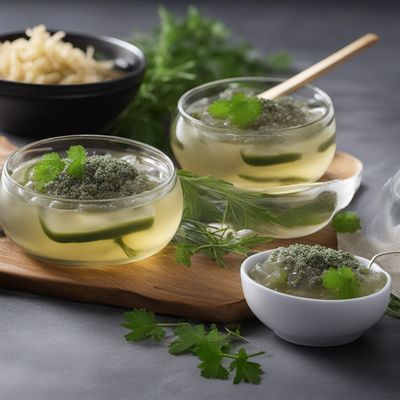
Ingredient
Eel, european
Delicacy from the Deep
European eel is a long and slender fish with a dark greenish-brown or grayish-black skin. Its flesh is tender, oily, and has a rich, distinctive flavor that is often described as sweet and earthy. The texture of cooked eel is soft and delicate, making it a popular choice in sushi, grilled dishes, or stews. Its unique taste and texture set it apart from other seafood options.
Origins and history
European eel has a long history of culinary significance, particularly in European and Asian cuisines. It has been enjoyed as a delicacy for centuries, with records of eel consumption dating back to ancient Roman times. In Europe, eel is often associated with traditional dishes like jellied eels in the United Kingdom or smoked eel in the Netherlands. In Asian cuisines, eel is commonly used in sushi, kabayaki (grilled eel), or unadon (eel rice bowl).
Nutritional information
European eel is a good source of protein, omega-3 fatty acids, and essential minerals such as calcium, phosphorus, and potassium. It is also relatively low in saturated fat. However, due to its high fat content, it is recommended to consume eel in moderation as part of a balanced diet.
Allergens
Fish
How to select
When selecting European eel, look for fish that have clear, bright eyes, shiny skin, and a fresh, mild aroma. The flesh should be firm to the touch and have a vibrant color. Avoid eels that have a slimy or dull appearance, as this may indicate poor quality or spoilage. If purchasing eel fillets, ensure they are properly refrigerated and have not been previously frozen.
Storage recommendations
Freshwater eels, including European eel, are challenging to raise or produce in a home setting due to their complex life cycle and specific habitat requirements. It is best to leave the production of European eel to commercial fisheries or aquaculture farms that specialize in their cultivation.
Preparation tips
To maintain the freshness and quality of European eel, it should be stored in the refrigerator at a temperature between 32°F and 39°F (0°C and 4°C). Keep the eel wrapped in plastic wrap or place it in an airtight container to prevent moisture loss and avoid cross-contamination with other foods. Consume the eel within 1-2 days of purchase for the best flavor and texture.
Substitutions
European eel can be prepared in various ways, depending on the culinary tradition. It can be grilled, smoked, fried, or stewed to bring out its unique flavor and texture. In European cuisines, jellied eels are a popular preparation method, where the eel is cooked in a spiced broth and then set in a gelatinous stock. In Asian cuisines, eel is often marinated in a sweet soy-based sauce and grilled, resulting in a caramelized and flavorful dish. It can also be used as a filling for sushi rolls or served as a topping for rice bowls.
Availability
European eel is commonly available in Europe, particularly in countries like the United Kingdom, the Netherlands, and France. It is also found in parts of Asia, including Japan and China, where it is highly valued in local cuisines.


